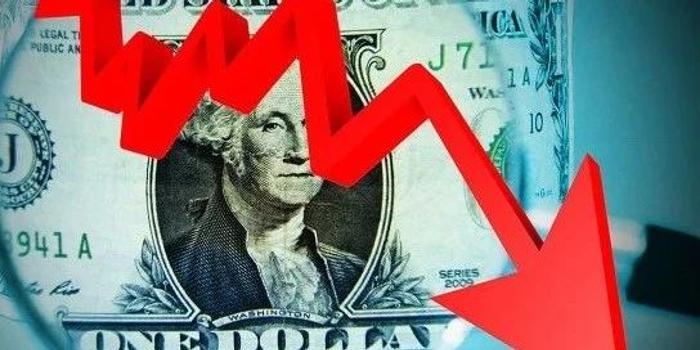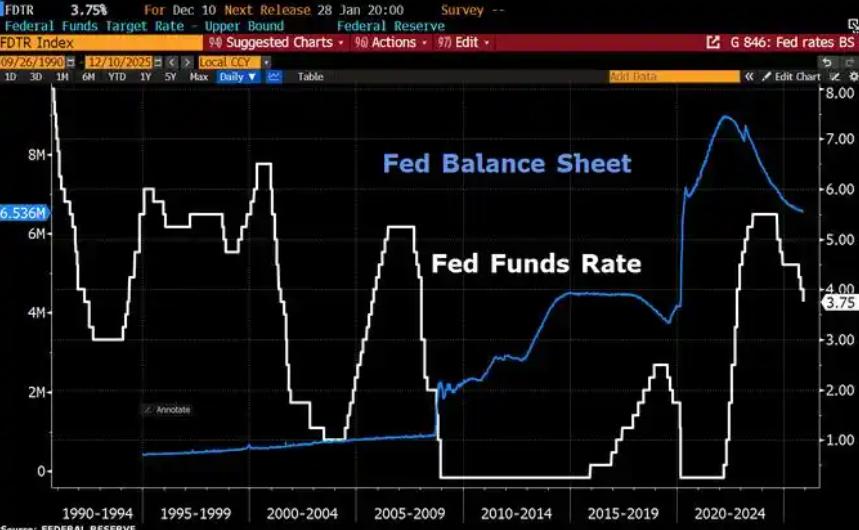
In the changing world of financial markets, the direction of monetary policy of the Federal Reserve is always the focus. Now, with the Federal Reserve meeting on Nov. 6 and 7 looming, markets' eyes are firmly focused on the key policymaking body's next move.
The Fed had been widely expected to continue cutting interest rates. This expectation is not groundless, but based on a combination of factors. On the one hand, the pressure of slowing global economic growth persists. Uncertainties in the international trade situation and structural problems facing some major economies have cast a shadow over the global economic outlook. As the world's largest economy, the United States is not immune. In this context, stimulating economic growth by cutting interest rates has become a possible policy choice.
On the other hand, the domestic economic data in the United States also supported the expectation of interest rate cuts to a certain extent. Inflation, while falling, remains in a relatively moderate range. At the same time, problems such as insufficient consumption growth and weak investment willingness of enterprises have gradually emerged. In order to maintain stable economic growth, the Federal Reserve has reason to adopt a more loose monetary policy.
However, the remarks of Wall Street tycoon Jeremy Siegel, like a boulder thrown into a calm lake, instantly aroused thousands of waves. He said a hot reading on Friday, when the US non-farm payrolls report is due on October 31, could upend those expectations and the Fed could "pause" at next week's rate-setting meeting.
The nonfarm payrolls report is always an important barometer of the U.S. economy. It reflects the state of the U.S. labor market and has important reference value for judging the overall trend of the economy. If the payrolls number is strong, it means the U.S. labor market is still active and the economy may have more momentum than expected. In this case, the Fed may reassess the current economic situation and decide that further interest rate cuts are not needed to stimulate the economy.
The uncertainty has created huge volatility in financial markets. Stocks, bonds, commodities and other sectors are closely watching the Fed's moves and are ready to react. On the stock market front, investor sentiment has turned more cautious. If the Fed pauses, it could put some pressure on the stock market. In particular, those industries that are sensitive to interest rates, such as real estate and finance, may be greatly affected.
In the bond market, the direction of the 10-year benchmark Treasury yield and the two-year Treasury yield will also be influenced by the Fed's policy expectations. If the market expects the Fed to pause, Treasury yields could rise as investors become more optimistic about future economic prospects and demand for risky assets increases. Conversely, if the market expects the Fed to continue cutting rates, Treasury yields could fall as investors seek safer investment options.
Commodity markets are not immune either. The price movements of commodities such as crude oil, gold, and silver are all closely related to the monetary policy of the Federal Reserve. In general, a rate cut causes the dollar to weaken, which pushes up the price of dollar-denominated goods. But if the Fed pauses, the dollar could strengthen and commodity prices could be somewhat depressed.
For investors, this uncertainty is both a challenge and an opportunity. At this time, investors need to pay closer attention to changes in economic data, as well as comments and moves by Fed officials. At the same time, investors also need to formulate reasonable investment strategies according to their own risk tolerance and investment objectives.
For companies, the direction of the Federal Reserve's monetary policy will also have an important impact on their business decisions. If the Fed continues to cut interest rates, companies' funding costs will fall further, which could spur them to increase investment and expand production. However, if the Federal Reserve suspends interest rate cuts, enterprises need to assess market risks more carefully and arrange funds reasonably to ensure the stable operation of enterprises.
In short, the change in the Fed's interest rate cut expectations has created great uncertainty in global financial markets. At this critical moment, all parties are closely watching the Fed's every move, expecting the world's most important central bank to make wise decisions and provide strong support for the stable growth of the global economy. For each of us, we also need to pay close attention to changes in the financial markets and be prepared to deal with various risks.

Since 2022, the Fed has cumulatively reduced its balance sheet by $2.4 trillion through quantitative tightening (QT) policies, leading to a near depletion of liquidity in the financial system.
Since 2022, the Fed has cumulatively reduced its balance sh…
On December 11 local time, the White House once again spoke…
Fiji recently launched its first green finance classificati…
Recently, the European Commission fined Musk's X platform (…
At the end of 2025, the situation in the Caribbean suddenly…
The U.S. AI industry in 2025 is witnessing a feverish feast…